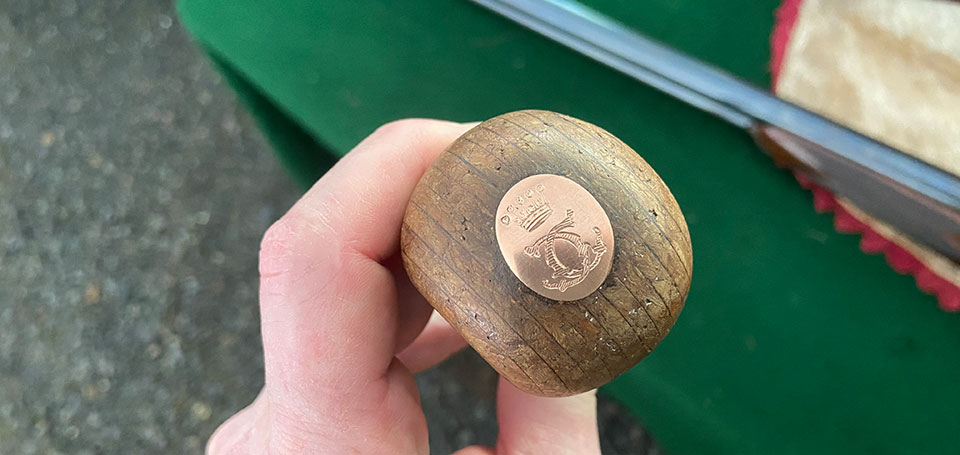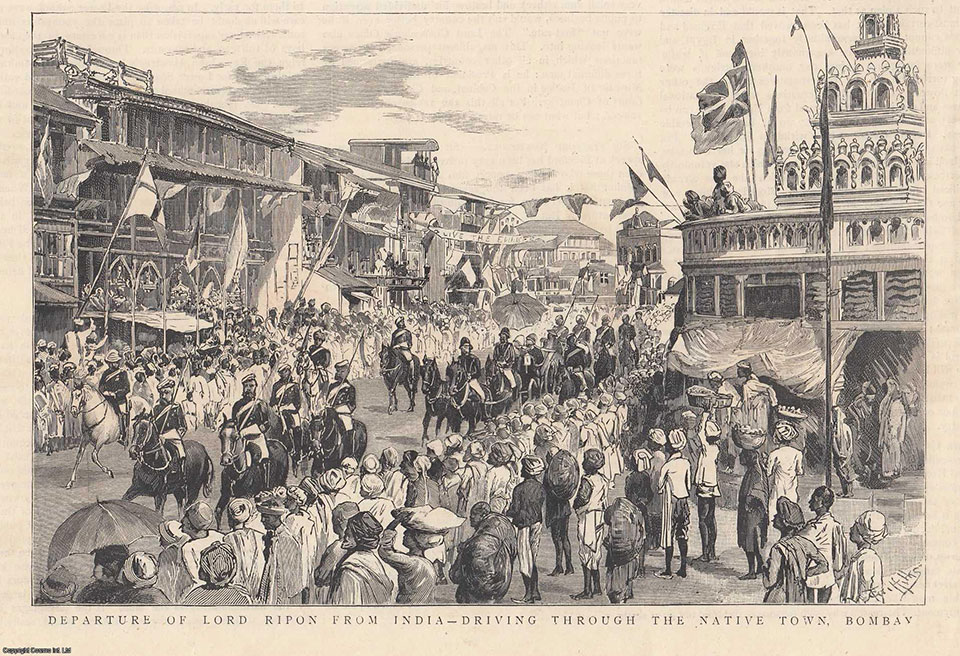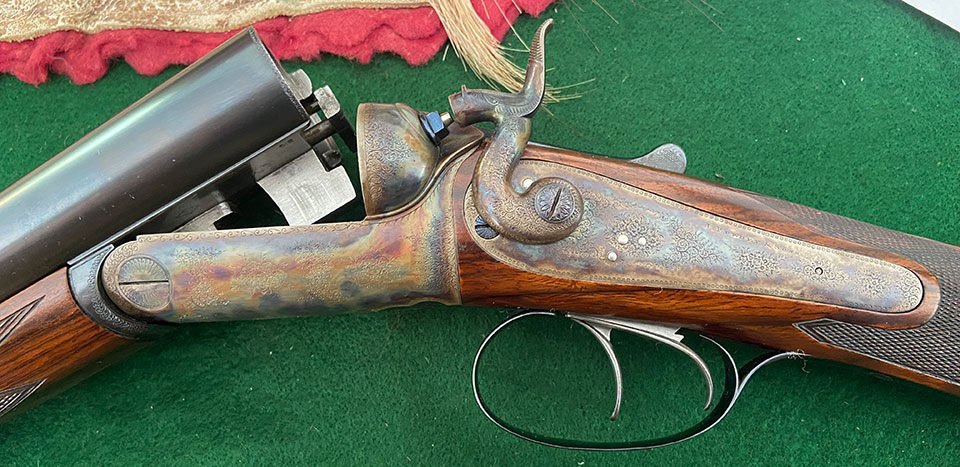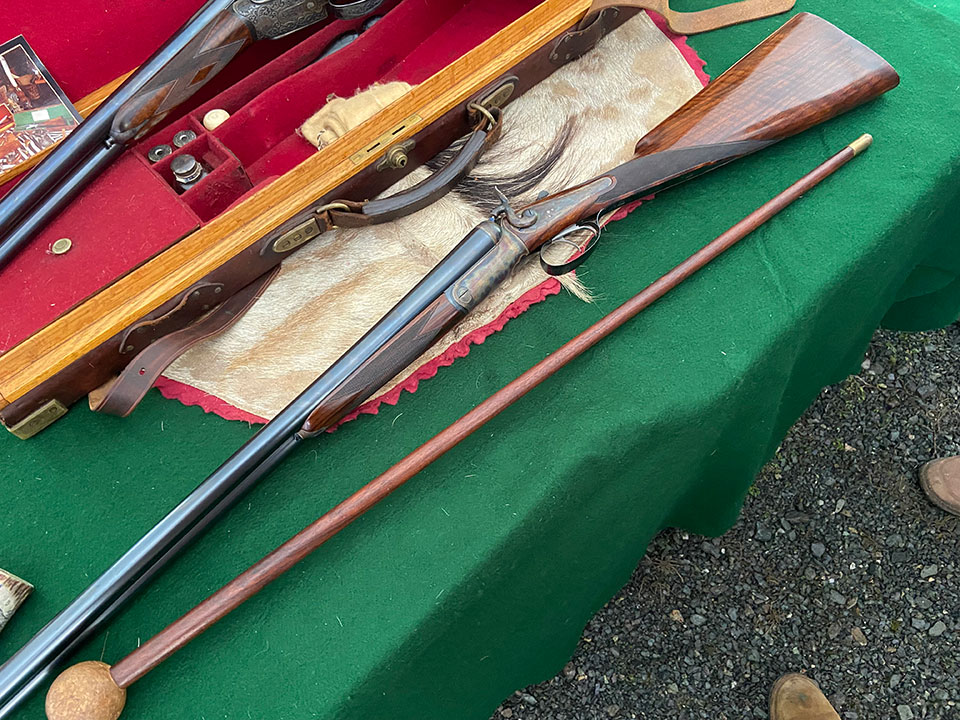When George (1st Marquis of Ripon) was appointed Viceroy of India, it reflected how highly regarded his diplomatic skills were by the government of the day.
The appointment caused concern for both George and his wife, as his health was not particularly strong, and there were many risks that came with life in such a posting. However, George accepted the position and successfully maintained Britain’s control of India during his four-year term there, to the point where it was expected that he might receive an earldom as a reward for his services.
As was common at the time, at least part of George’s time in India involved hunting, as part of socialising with Indian royalty, and which required a suitable outfit of guns and accessories. Unlike royal trips, where such arms were often intended as gifts for various maharajahs, George’s purchases appear to be only intended for either his personal use, or for Olly’s.
George accepted the position and successfully maintained Britain’s control of India
It was an expensive enterprise; the outfit comprised a total of seven rifles, one shotgun and one revolver, their associated accessories, and refinishing of arms the two men already owned, at a total cost of £751 11s 2d. Every item going to India was either listed separately or specially marked as such, meaning that George’s accounts provide a rare glimpse into the sort of arms purchased by a man appointed to the most senior political position in the Raj.

Looking at Purdey’s accounts, the various purchases appear to have been made in three distinct groups. The first took place in May 1880, shortly before George’s departure, and appears to relate entirely to the arms he needed himself. The only new purchase at this time was No. 10,456, a ‘Best’ .577 (B.P.E.) double rifle, which I discussed briefly in my previous article. George had this rifle regulated to shoot to the same point of aim as No. 10,375, which he had purchased the previous summer.
He also purchased 250 rounds of ammunition for each rifle, and spare springs and tools were provided for his newest trio of shotguns, Nos. 10,544/5/6. George also had the lock of one of his pair of muzzle-loading rifles, No. 7359, repaired, suggesting that they may also have gone with him as well.
George paid to have his oldest trio, Nos. 7746/7/8, refurbished
Mail canvas overcases were fitted to all of the guncases, and then the group were fitted into a tin-lined shipping case, which itself cost 15s. These then appear to have comprised the group that travelled out to India with George. Thereafter, apart from a telegram sent to Simla in August, no further charges were made until September.
At the beginning of that month, George paid to have his oldest trio, Nos. 7746/7/8, refurbished, together with a new 12-bore bar-in-wood hammer gun, No. 10,172. This had a self-cocking action, operating in the same way as No. 10,395, the 20-bore gun that Olly had purchased in 1879. However, George’s was a 12-bore, and although apparently initially built for stock in 1878 with full choke in both barrels, this was entirely taken out in August 1880 to create a shot-and-ball gun, with a flush sight for 65 yards fitted into the rib.

The whole group were again supplied with a tin-lined shipping case, but whether these went out as unaccompanied freight is unclear. There is a note of a cab being paid to the docks on 6 September, and that there was a rush to complete the work is suggested by the accounts having to add additional charges for these purchases in late November. However, Olly was due to leave to visit his parents the following month, and so he could also have taken them as part of his baggage. That said, he was already well equipped, as on 5 October he visited 314½ Oxford Street and made some purchases of his own, as well as some on behalf of his father.
The first item in this final group is the 4-Bore rifle, No. 9856, which had been displayed at the Paris Exhibition the previous year and which I have discussed previously (see The Largest Purdey Rifle Ever Made). There are then a further three arms on Olly’s account, all purchased on the same date: No. 10,505, a second-hand 10-bore hammer gun fitted with flush-sights for 70 & 100 yards; No. 10,777, another ‘Best’ .577 (B.P.E.) double rifle; and a nickel-plated Smith & Wesson .380 (CF) revolver, together with a belt and holster.
Both the gun and rifle appear to have remained in use by Olly after his return from India, with the 10-bore coming back for servicing as late as 1893. He also took the opportunity to refurbish and recase his original trio of shotguns, Nos. 8192/3/4, as he returned his second trio to Purdey in November 1880 and would not receive their replacements until after his return from India.

George’s account includes a final purchase of four double rifles, all numbered sequentially and chambered in .500 (B.P.E.); Nos. 10834/5/6/7. These were “3rd Quality” rifles, supplied by ‘Smith’ and costing £42, less than half that of the £89 5s charged for a best rifle. Although not explicitly stated, they appear to have been supplied as complete rifles, with every entry noting their manufacturer.
This may explain why they are listed individually in both the account ledger and the dimension book, as there are very minor differences between the four. They are therefore not truly paired, but the first two were sighted for Olly, and the second two for George. They were also all regulated using bullets cast from the same mould, and therefore were certainly relatively interchangeable. Each was supplied with its own case and fittings, together with a moleskin gun cover.
total expenditure on firearms comes to £552 19s 6d
The total expenditure on firearms comes to £552 19s 6d, meaning that the remaining £200 was spent on ancillaries. Five cartridge carriers, ranging in capacity from 100 to 500, were purchased, as well as cartridge bags, gun covers and canvas overcases for the various gun cases. These all then needed to be suitably stamped and painted with ownership details.
There were also reloading tools, including turnover tools for 4-, 10-, 12- and 20-Bore, and an Erskine cartridge-loading machine to load a hundred cases at a time. This necessitated the purchase of reloading components, including 11,000 12-Bore cases and 1,000 20-Bore cases, together with enough wads and top cards to reload every cartridge twice.
There were also quantities of prepared rifle ammunition, ranging from 200 rounds for the 4-Bore rifle up to 5,000 cartridges in .230, supplied with 3lbs. of Vaseline to lubricate the bullets. Finally, there were adjustments or fittings for rifles by other makers, including a Rigby 20-Bore and a Holland .380 rifle.

Together, these accounts demonstrate just how comprehensively armed both father and son were for their respective times in India, as well as reflecting the demands of George’s office. Although not apparently intended as gifts, it seems entirely likely that many were given away, as very few appear in either man’s account beyond that initial purchase.
Of the nine arms purchased specifically for India, only four appear in their accounts in subsequent years. As for the remaining five, it seems most likely that they were gifted or left in India. At least one, No. 10,456, was in the possession of an Army officer by the time it was reshot in 1896, but with that exception the rest are unknown, and no further details are recorded.
At least one, No. 10,777, has recently resurfaced at auction as part of Christopher Wynn’s collection. Sadly, it had suffered the worst fate of all, having been smooth-bored to 20-Bore by a subsequent owner.
Published by Vintage Guns Ltd on




